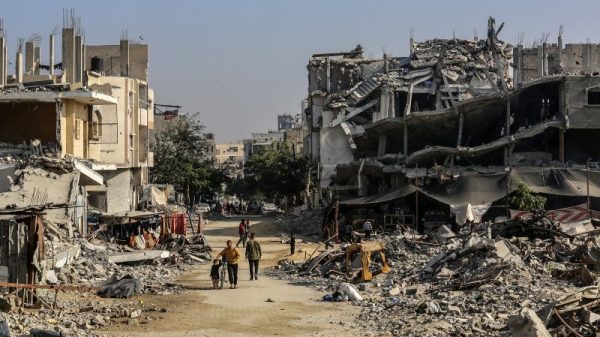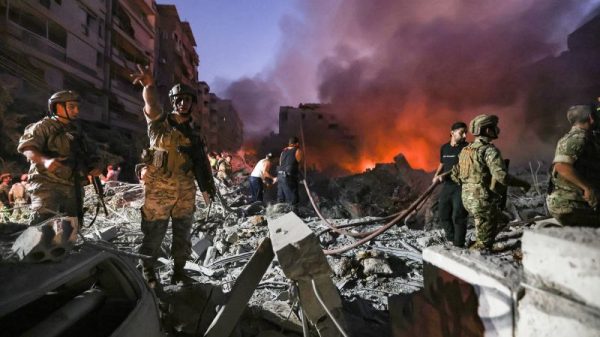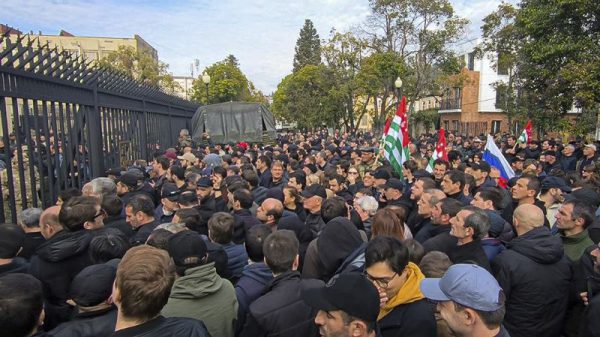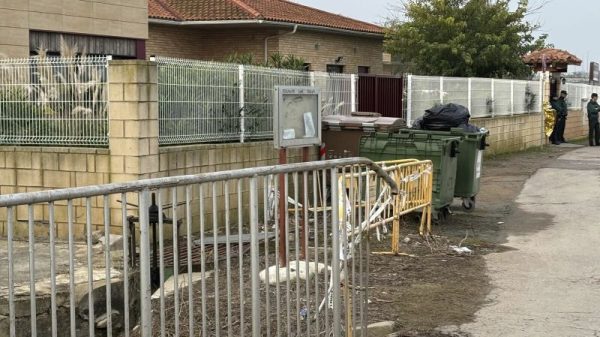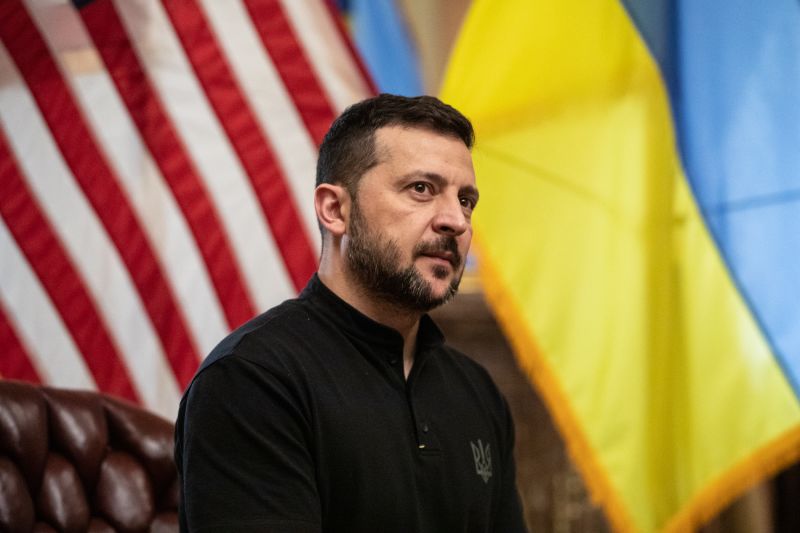Next week, an already very public debate over whether Ukraine should be allowed to use long-range Western-supplied missiles on Russian soil will come under an even brighter international spotlight.
Ukraine’s President Volodymyr Zelensky is set to meet not only US President Joe Biden, who has signaled he is open to discussing the issue, but also likely both US presidential candidates on the sidelines of the UN General Assembly in New York.
Those meetings come as experts say the public wrangling on this topic has raised the stakes of the decision, and potentially shifted the role these missiles – the Franco-British Storm Shadow/Scalps and US-made Army Tactical Missile Systems (ATACMS) – might play in this expanding war.
It was almost exactly a year ago, also during an in-person meeting with Zelensky in the United States, that Biden made the decision to supply the ATACMS to Ukraine.
The news did leak out, but official confirmation only came a month later, Zelensky burying it at the end of a nightly address on October 18. “Our agreements with President Biden are being implemented,” he said. “And they are being implemented very accurately – ATACMS have proven themselves.” By that point the missiles had, according to US officials, already been used in several strikes on Russian-occupied Luhansk and the southern coastal town of Berdiansk.
A few months earlier, a similar story played out with the British Storm Shadows when then-Defence Secretary Ben Wallace only confirmed they had been supplied once they were already in use. In both cases, Ukraine promised not to use them on Russian territory.
This September, Zelensky is employing a strategy of more openly challenging his allies, and that, combined with Russia’s open threats that any lifting of restrictions on their use would mean war with NATO, has turned the issue of firing these missiles into Russia into a political touchstone, an ultimate determinant of the extent of Western support.
Zelensky has refused to allow the topic to fall out of the headlines – publicly criticizing his allies’ hesitation after a Russian strike on a military educational facility in Poltava killed more than 50 people earlier this month.
“Every day of delay is, unfortunately, the death of people,” he said.
Last weekend, after a Russian bomb attack on an apartment block in Kharkiv, he even made veiled accusations of cowardice, saying: “This terror can be stopped. But to stop it, the fear of making strong, objectively necessary decisions must be overcome.”
“Zelensky has taken a bit of a risk on this,” said Matthew Savill, director of military sciences at the Royal United Services Institute, a think-tank in London. “He’s almost playing political chicken. He’s kind of daring people to support him.” If it happens though, the political dividend would be significant, says Savill, blunting Russian rhetoric and “demonstrating firm international support” for Ukraine.
As for the battlefield dividend, that, experts say, is less clear cut.
Opinion is divided on the extent to which the public debate around the missile permissions has blunted their potential utility – especially when it comes to targeting Russian fighter jets and missiles before they can be used against Ukraine’s civilian infrastructure. US intelligence believes 90% of Russian aircraft that launch deadly glide bombs (at least 100 per day, according to Zelensky), are more than 300 kilometers (186 miles) from Ukrainian-controlled territory, so outside of ATACMS range. And that number may be increasing. Russia recently relocated planes from two bases near the border further east, according to one US official.
Savill agrees “lots of the juiciest targets” have likely been moved deeper into Russian territory, meaning the impact on the war may be “limited.” But that doesn’t mean the missiles have no utility. Storm Shadows, designed to penetrate deep into concrete, could be effective against military headquarters, or ammunition stores, many of which are still in range. ATACMS, some of which have cluster warheads, could be used to do significant damage to airfields. The Institute for the Study of War (ISW), a think-tank in Washington DC, has calculated that 15 Russian airfields are in range of ATACMs (though it’s not clear how many aircraft are still housed on them).
George Barros, the author of that ISW research, agrees a less public debate may have been preferable, but if the very prospect of these permissions being granted has forced Russia to move aircraft further from the border, it’s a good thing. It could reduce the number of bombing missions Russian planes can make (known in the military as the “sortie rate”) and buy Ukraine valuable detection and reaction time for incoming attacks.
More importantly, he believes that if Ukraine could strike Russian troops, weaponry and logistics within the 300-kilometer range of the top-end ATACMS, it would for the first time force Russia to calculate the risks of moving large amounts of troops and equipment into Ukraine.
Barros’ research has pinpointed at least 200 potential targets that would be in range of ATACMs, ranging from military regiments to fuel depots, weapons storage depots, and even the headquarters of Russia’s Southern Military district in Rostov (all of which would be much harder to move than aircraft).
The list is also conservative, Barros acknowledges, and has not accounted for new targets installed after the start of the full-scale invasion in February 2022. And some of the newest targets of all could, according to Savill, include Iranian FATH-360 ballistic missiles, which the US believes have already been supplied and have a range of just 75 kilometers (47 miles), far less than the Western missiles.
Experts also agree the missiles could provide valuable support to Ukraine’s drone and ground operations. Savill believes ATACMS could do serious damage to Russian air defense radars and systems, adding that “if you punch a hole through, actually Ukrainian long-range drones have got better options to penetrate deeper into Russia.” Hitting Russian air defense systems in the border areas could also improve Ukraine’s chances of retaking its own territory, said Barros.
“You actually do open up some interesting areas where there’s parts of occupying Ukraine that are no longer under Russia’s air defense umbrella,” he said.
There’s also the option in theory, Savill said, to extend the range of the missiles by launching from Ukrainian positions inside Kursk, though that could put Ukrainian bombers and missile launchers in the crosshairs of Russian air defenses.
Ultimately, Ukraine continues to argue that the ability to use Western-supplied long-range missiles inside Russia is part of the complex jigsaw puzzle of ending this war on Kyiv’s terms — and a way to show Russia it cannot outlast Ukraine’s allies.
Zelensky is heading to the US on the one hand buoyed by the Kursk offensive providing fresh evidence of both Ukrainian ingenuity and, he argues, the flimsiness of Russian “red lines,” but on the other hand motivated by the prospect of a third winter with critical electricity shortages, and still inadequate supplies of equipment and manpower.
“We need to have this long-range capability not only on the occupied territory of Ukraine, but also on Russian territory,” he told a large gathering of Ukraine’s allies at the US’ Ramstein Air Force Base in Germany earlier this month, “so Russia is motivated to seek peace.”












